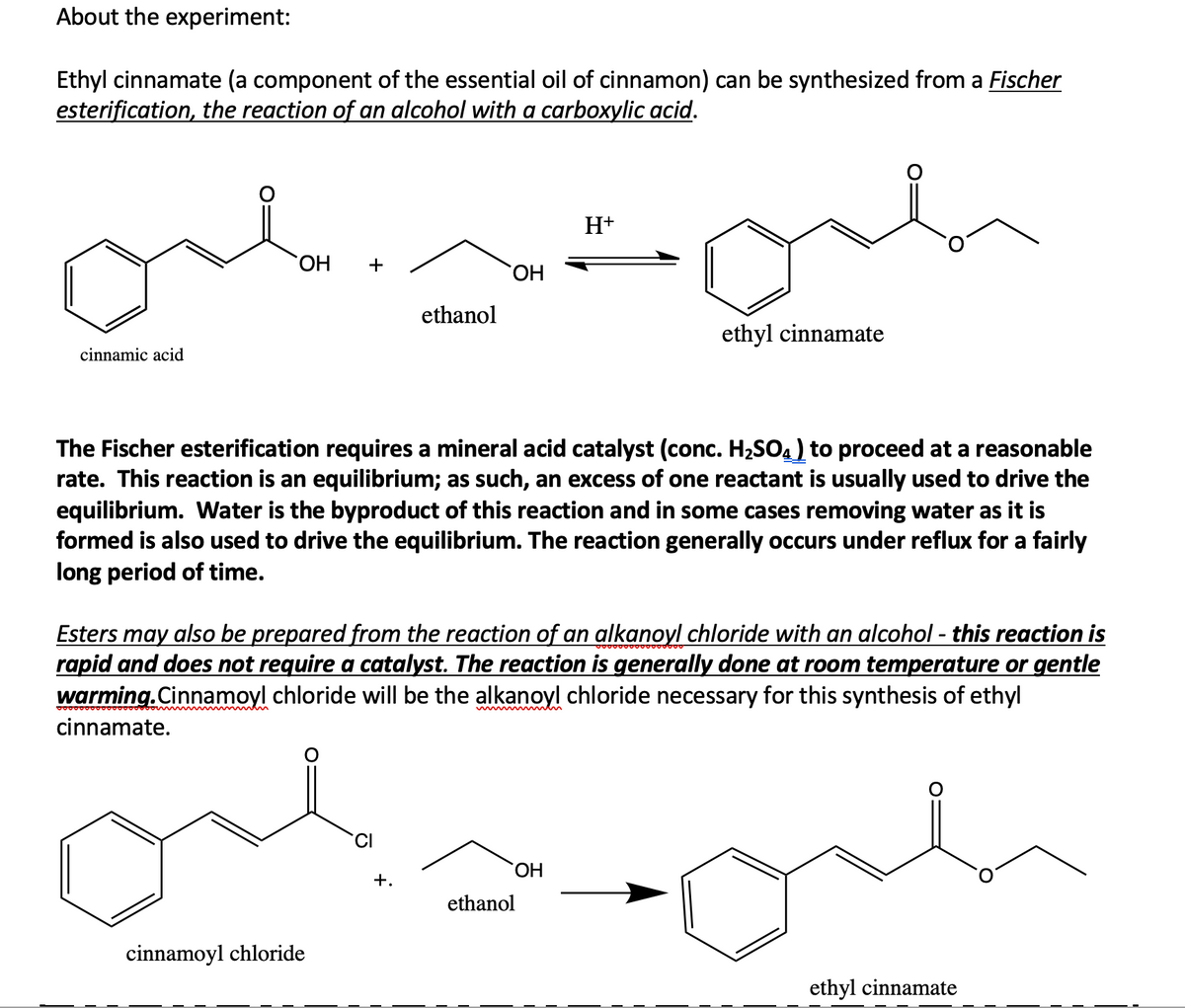How does washing with 10% sodium bicarbonate help to isolate ethyl cinnamate in each synthesis reaction? As part of your answer show the reaction of aqueous sodium bicarbonate with cinnamic acid and with cinnamoyl chloride (remembering that cinnamoyl chloride hydrolyzes to cinnamic acid in water).
How does washing with 10% sodium bicarbonate help to isolate ethyl cinnamate in each synthesis reaction? As part of your answer show the reaction of aqueous sodium bicarbonate with cinnamic acid and with cinnamoyl chloride (remembering that cinnamoyl chloride hydrolyzes to cinnamic acid in water).
Organic Chemistry
8th Edition
ISBN:9781305580350
Author:William H. Brown, Brent L. Iverson, Eric Anslyn, Christopher S. Foote
Publisher:William H. Brown, Brent L. Iverson, Eric Anslyn, Christopher S. Foote
Chapter23: Amines
Section23.6: Reactions With Acids
Problem 23.9P
Related questions
Question
How does washing with 10% sodium bicarbonate help to isolate ethyl cinnamate in each synthesis reaction? As part of your answer show the reaction of aqueous sodium bicarbonate with cinnamic acid and with cinnamoyl chloride (remembering that cinnamoyl chloride hydrolyzes to cinnamic acid in water).

Transcribed Image Text:About the experiment:
Ethyl cinnamate (a component of the essential oil of cinnamon) can be synthesized from a Fischer
esterification, the reaction of an alcohol with a carboxylic acid.
H+
+
HO.
ethanol
ethyl cinnamate
cinnamic acid
The Fischer esterification requires a mineral acid catalyst (conc. H2SO4) to proceed at a reasonable
rate. This reaction is an equilibrium; as such, an excess of one reactant is usually used to drive the
equilibrium. Water is the byproduct of this reaction and in some cases removing water as it is
formed is also used to drive the equilibrium. The reaction generally occurs under reflux for a fairly
long period of time.
Esters may also be prepared from the reaction of an alkanoyl chloride with an alcohol - this reaction is
rapid and does not require a catalyst. The reaction is generally done at room temperature or gentle
warming.Cinnamoyl chloride will be the alkanoyl chloride necessary for this synthesis of ethyl
cinnamate.
CI
+.
ethanol
cinnamoyl chloride
ethyl cinnamate
Expert Solution
This question has been solved!
Explore an expertly crafted, step-by-step solution for a thorough understanding of key concepts.
This is a popular solution!
Trending now
This is a popular solution!
Step by step
Solved in 3 steps with 2 images

Knowledge Booster
Learn more about
Need a deep-dive on the concept behind this application? Look no further. Learn more about this topic, chemistry and related others by exploring similar questions and additional content below.Recommended textbooks for you

Organic Chemistry
Chemistry
ISBN:
9781305580350
Author:
William H. Brown, Brent L. Iverson, Eric Anslyn, Christopher S. Foote
Publisher:
Cengage Learning

Organic Chemistry
Chemistry
ISBN:
9781305580350
Author:
William H. Brown, Brent L. Iverson, Eric Anslyn, Christopher S. Foote
Publisher:
Cengage Learning